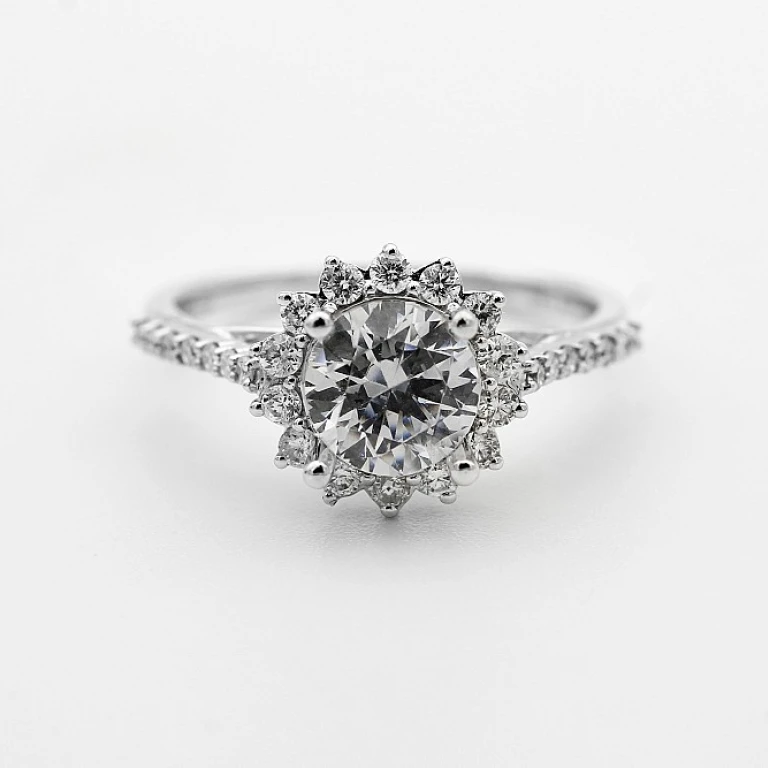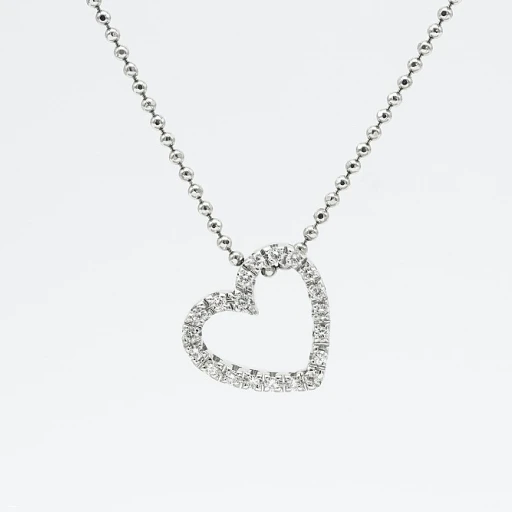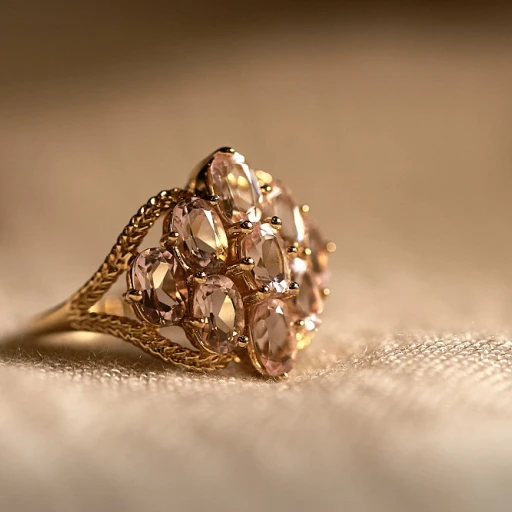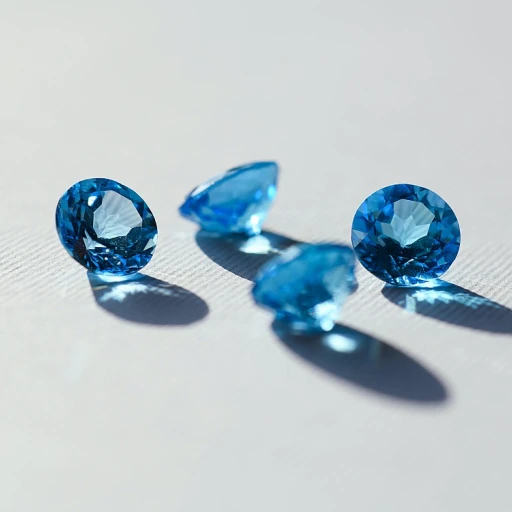Unveiling the Revolution: What is Invisible Hallmarking?
Exploring the Fundamentals of Invisible Hallmarking
In the intricate world of fine jewelry, a hallmark has traditionally served as a stamp of authenticity and quality, signifying the maker, the metal content, and sometimes the place and year of manufacture. However, in the stealthy evolution of luxury assets, the concept of invisible hallmarking has surged, marrying innovative technology with time-honored tradition. Understanding the role of hallmarking in authenticating fine jewelry is akin to holding a magnifying glass to the very soul of the craft—a narrative embedded in every piece.
The Science Behind the Invisibility
Invisible hallmarking relies on cutting-edge techniques such as laser inscription to discreetly etch information into precious metals or gemstones. Unlike traditional methods that might mar the surface, this modern approach ensures the aesthetic integrity of the piece remains intact. Statistics from the luxury market suggest that an uptick in demand for such subtlety in fine jewelry authentication is not just a trend but a paradigm shift—consumers are increasingly invested in the allure of hidden details which offer both security and sophistication.
The Forefront of Innovation: Laser Precision Meets Legacy
Leveraging the precision of technology, jewelers now inscribe codes so minuscule they’re not visible to the naked eye, yet they carry significant information about the piece's provenance and purity. According to industry insiders, this method does not compromise the design or structure of the high-value items, making it a favorite among fine jewelry connoisseurs. With reported increases in the luxury goods sector's growth, where authenticity is paramount, invisible hallmarking becomes an essential element for discerning consumers prioritizing discretion and quality assurance.
Authenticating with Stealth: The Benefits of Invisible Hallmarks
The Tactical Advantage of Stealth Verification
As the fine jewelry market evolves, invisible hallmarking stands out as a groundbreaking authentication method. According to a report by Market Data Forecast, the global gem and jewelry market is projected to grow at a CAGR of 5.5% from 2021 to 2026, underscoring the need for robust verification systems. Invisible hallmarks provide stealth verification that is not perceptible to the naked eye. This innovative technology utilizes microscopic marking techniques, ensuring each piece's authenticity and provenance without affecting its aesthetic value. It acts as a clandestine signature that deters counterfeiting, a significant concern in an industry where counterfeit goods account for approximately 7% to 15.5% of the overall trade according to the OECD.
Enhancing Customer Trust with High-Tech Assurance
Customer confidence is paramount in the fine jewelry sector, a sentiment echoed by 76% of consumers in a survey by MVI Marketing. Invisible hallmarking provides a seal of assurance to clients, affirming the integrity of their purchase. As buyers increasingly demand transparency, jewelers who adopt this technology show commitment to quality and authenticity. This high-tech hallmarking animates the fine jewelry owner's narrative, transforming a simple purchase into an investment backed by technological fortitude.
Marketing Might: Positioning Invisible Hallmarks in Luxury Branding
For the discerning customer, luxury is synonymous with exclusivity and security. Invisible hallmarking is not only a tool for authentication but also a compelling feature for luxury branding. This discreet yet powerful element can be a unique selling point, distinguishing a brand in a competitive marketplace. An analysis by Bain & Company revealed that personalization and innovation in luxury branding are key to capturing the new-generation clientele. By highlighting the presence of invisible hallmarks in marketing collaterals, fine jewelry businesses can leverage SEO strategies and storytelling to amplify their brand's prestige and exclusivity.
For a comprehensive insight into the detailed process of invisible hallmarking and its implications for your fine jewelry collection, consider exploring our feature on Cracking the Code: A Comprehensive Hallmarking Guide for the Fine Jewelry Owner.
Craftsmanship in the Digital Age: How Technology Is Shaping Artistry
Emerging Technologies Elevating Jewelry Design and Production
The fine jewelry industry is witnessing a paradigm shift in its operation and artistry, largely owed to advancements in technology. The introduction of invisible hallmarking is just the tip of the iceberg. In recent years, 3D printing technology has revolutionized jewelry making, with a CAGR (compound annual growth rate) projected to increase by 26.4% from 2020 to 2027 in the 3D printed jewelry market, according to a report by Grand View Research. This transformative tech enables designers to develop intricate and precise pieces that were once deemed impossible to create by hand.
Integrating Tradition with Innovation: A Harmony Between Old and New
Artisans are now merging time-honored methodologies with digital precision. CAD (Computer-Aided Design) software is allowing jewelers to create intricate designs with a level of detail and symmetry that manual skills cannot replicate. Such an analytical approach does not strip away the craft's soul but enhances it. Imagine the possibilities when the human touch is combined with the precision of lasers and the versatility of CAD tools. The craftsmanship that ensconces fine jewelry is now finding a new language of expression in the digital era.
From Concept to Creation: Streamlining Jewelry Customization
Customization has become a significant draw for fine jewelry aficionados. Statics show that personalized pieces can garner a premium of 20-30% over standard pieces. The seamless transition from design concept to physical product is a testament to how technology like invisible hallmarking is reshaping customer experience. Such advancements ensure that every piece of jewelry bears not only the personal touch of the craftsman but also the distinct preferences of its owner. Referencing sustainable metal alloys, buyers are increasingly discerning about the materials, ensuring their luxurious investments are also ethically sound and laced with modern technology.
Protecting Your Assets: The Rise of Invisible Hallmarks as Investment Tools
Invisible Hallmarks as a Shield for Your Valuables
The integration of invisible hallmarking within the fine jewelry sector has provided an added layer of security for both collectors and investors. Investment in fine jewelry is not merely a purchase of aesthetic pieces but also an acquisition of assets with potential long-term value appreciation. Traditional hallmarks have been pivotal in authenticating fine jewelry, ensuring the validity and purity of precious metals, which, in turn, supports their investment value. Modern invisible hallmarking techniques further empower owners by virtually eliminating risks associated with counterfeit pieces—a concern that has been supported by statistics indicating an increase in luxury goods counterfeiting year on year.
The Economic Implications of Invisible Hallmarking
According to recent market analysis, the fine jewelry industry has seen a surge in consumer confidence in pieces authenticated with invisible hallmarks. This surge can be attributed to the assurance that these discrete marks provide a verifiable trail back to the original maker, hugely important for resale and insurance purposes. Notably, insurance premiums for fine jewelry can often be reduced when pieces have secure and verifiable markings, due to the lowered risk of fraud. Collectors see invisible hallmarking as not just a feature but a necessity for safeguarding their investments, as reflected in the steady growth of high-end jewelry pieces utilizing these technologies.
Blending Tradition with Technology for Enhanced Security
In an industry where tradition plays a fundamental role, the adoption of contemporary technologies like invisible hallmarking illustrates a strategic move towards enhancing the security of fine jewelry. Renowned jewelers have noted that clients are now specifically requesting these advanced protective markers, and they have seen a corresponding uptick in sales of such items. In essence, by blending centuries-old crafts with breakthrough technology, fine jewelry owners can now experience peace of mind when it comes to the authenticity and protection of their treasured assets, further solidifying the craftsman's legacy and the piece's monetary worth.
Reinforcing the Resale and Provenance of Fine Jewelry
Reinforcing the value of fine jewelry through invisible hallmarking also dramatically impacts the resale market. Detailed in articles discussing the significance of traditional hallmarking, the role of these invisible signs is to provide an unassailable proof of provenance that is critical when pieces change hands. Collectors and investors rely on these hallmarks as certifiable evidence that can potentially boost the resale value. Moreover, auction houses and private sales venues have begun emphasizing the presence of invisible hallmarks in their listings, with statistics showing that items featuring such innovative security measures garner higher interest and competitive bidding scenarios.






